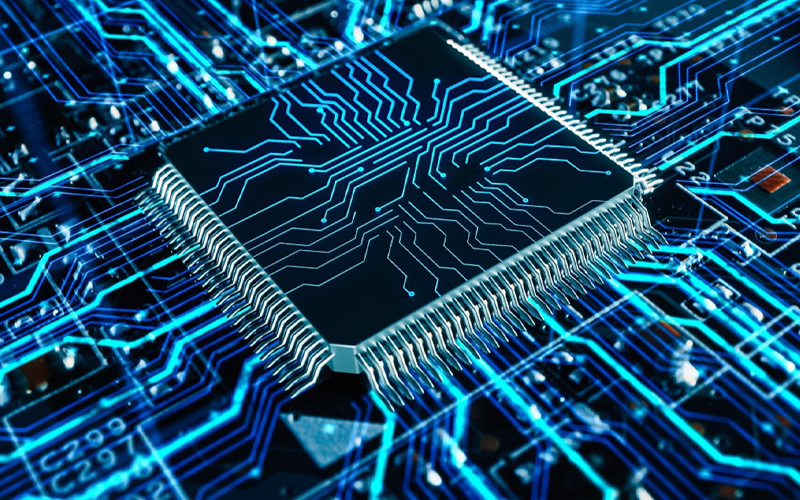In the 1980s when famed American Molecular Biologist Maynard Olson of the University of Washington showed up at the genetics department with a computer terminal one day, he was greeted with the question- “What are you going to do with that? This is a genetics department.” He was one of the earliest scientists and a founding member of the Human Genome Project to use computer-developed algorithms for genome mapping. It took The Human Genome Project 13 years, 6 countries, 20 universities, hundreds of scientists and around 3 billion dollars to bring it to completion. Today the sequencing of the human genome can be done in about a day’s time and for $600! One of the main reasons is due to advancements in new generation sequencing (NGS), hardware, computational biology and cloud-based storage capacities to do the super-fast sequencing.
Genome sequencing has shifted from being the intellectual engagement of the pioneering scientists who displayed skill at Sanger's Method of sequencing at laboratories to a booming NGS kits market with companies vying for the $1.1 billion share of the pie, per 2021 data.
Genetic disorders and DNA scissors: The blueprint to build and sustain any organism is encoded in its DNA. When errors occur in the DNA, it could lead to genetic disorders which can be limiting and/or life-threatening. Genome sequencing is the method that allows scientists to read the entire genome and note regions of mutations in the DNA. The exact locations of these genetic mutations could help tailor gene therapy methodologies and make them razor-sharp. The razors or scissors needed to cut and rejoin the DNA are a group of enzymes made of proteins.
Where exactly does AI (Artificial Intelligence) fit into this biology schema?
Two fields of AI – Machine Learning (ML) and Deep Learning have helped advance both genomics and proteomics. It uses datasets to train machines to do what humans would do – with greater accuracy, speed and with zero errors.
AlphaFold – A free-to-use AI tool developed by Google DeepMind in 2018 shocked the scientific community by predicting the 3D structure of 200 million proteins with high accuracy. The knowledge of protein structure is vital to understanding its functionality. The cost of determining the structure is ~ $100000 per protein while the cost of a whole genome sequence is ~ $1000. Hence, predicting protein structures computationally is more feasible. Not surprisingly, AlphaFold is being viewed as the shining new tool in the hands of the drug-discoverers.
AlphaMissense – Another AI offering from DeepMind that can pinpoint genetic mutations from a host of benign ones. A missense mutation in a DNA results in a single amino acid alteration in protein structure that may result in alteration in its function. These mutations can also be benign- i.e., do not cause a difference in its function. AlphaMissense helps in predicting missense mutations, thus widening the diagnostic lens for a wide variety of genetic diseases. It can be seen as an additional filter to sift through possible mutations and arrive at a genetic diagnosis faster.
Protein Annotation – AI has heralded a new era in protein sequence and annotation. The AlphaFold provided the structure for millions of proteins – many that have not even been discovered yet. The cost of experimentally determining the structure and function of proteins is time-consuming and expensive. It is prudent and practical to turn to AI-powered protein annotation. With the scale and speed at which protein bioinformatics is progressing, we are sure to witness innovations in life sciences.
Gene-editing tools- CRISPR-Cas9 is a DNA scissor capable of making cuts in our DNA at specific locations to enable gene therapy treatments. AI-based protein structure predictions can help sharpen the molecular scissors by making them more precise.
As far as the use of AI/ML in biological sciences is concerned, we have only scratched the surface yet. It could help pinpoint the faults in our genomes and help to correct them as well.
Collaborative Power: How AI and Experts Unite to Address Genetic Faults?
In the pursuit of pinpointing our genetic faults, AI is a powerful ally, but it does not stand alone. It underscores the significance of collaborative efforts between AI developers, geneticists, clinicians, and policymakers to ensure that these innovations are harnessed for the betterment of humanity. As AI continues to evolve, our understanding of our genetic makeup deepens, and with responsible and ethical application, we can look forward to a future where the prevention and treatment of genetic diseases are more precise and effective than ever before.
* For organizations on the digital transformation journey, agility is key in responding to a rapidly changing technology and business landscape. Now more than ever, it is crucial to deliver and exceed organizational expectations with a robust digital mindset backed by innovation. Enabling businesses to sense, learn, respond, and evolve like a living organism, will be imperative for business excellence going forward. A comprehensive, yet modular suite of services is doing exactly that. Equipping organizations with intuitive decision-making automatically at scale, actionable insights based on real-time solutions, anytime/anywhere experience, and in-depth data visibility across functions leading to hyper-productivity, Live Enterprise is building connected organizations that are innovating collaboratively for the future.







